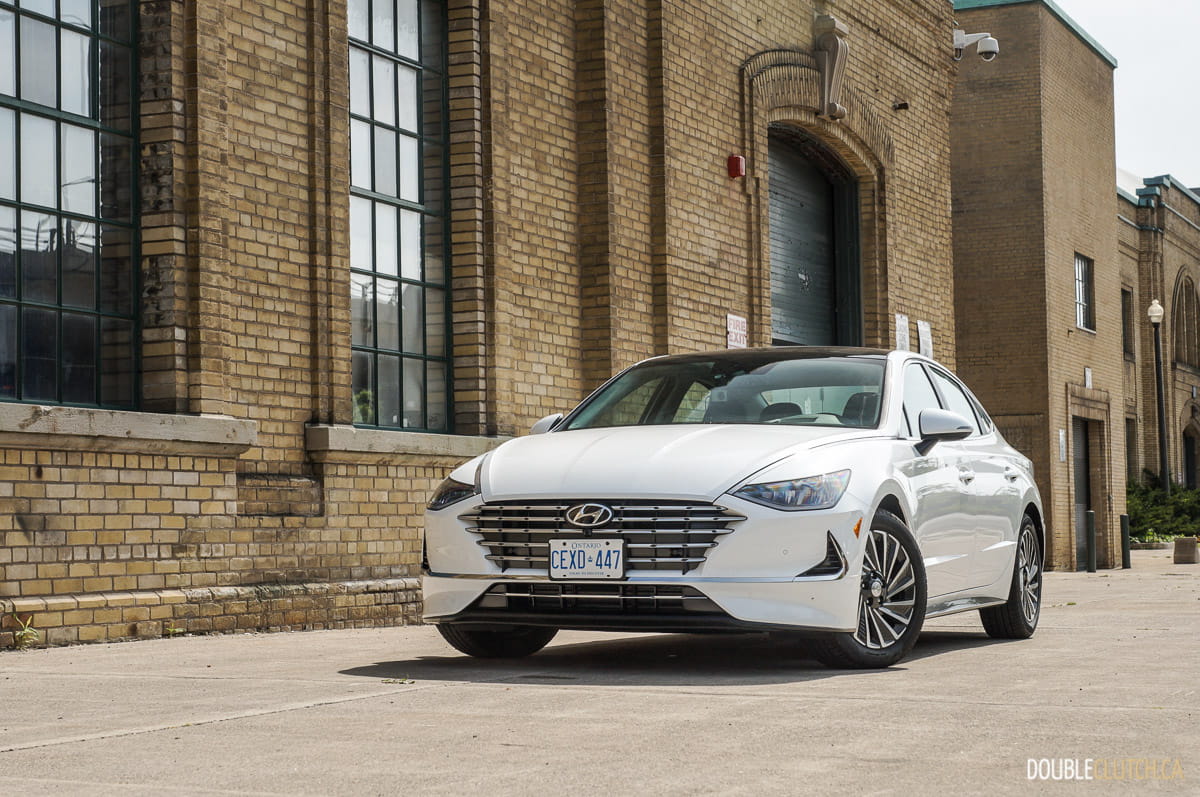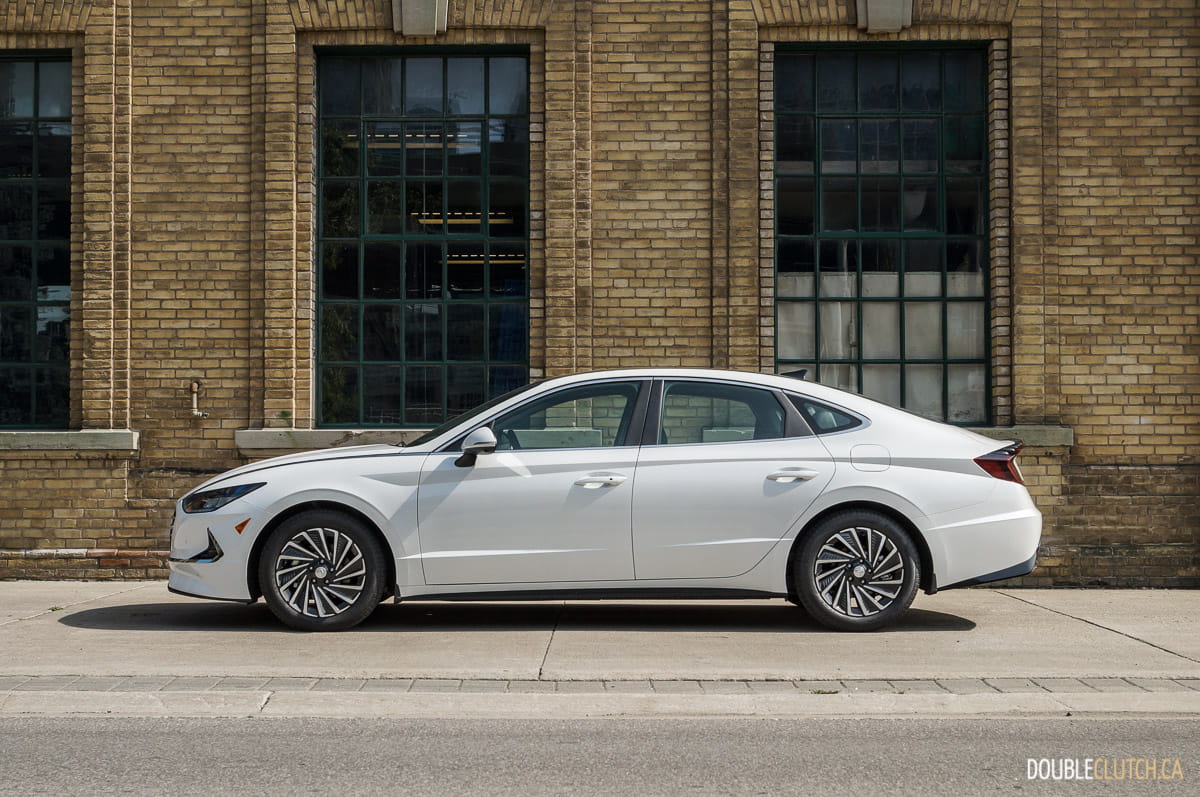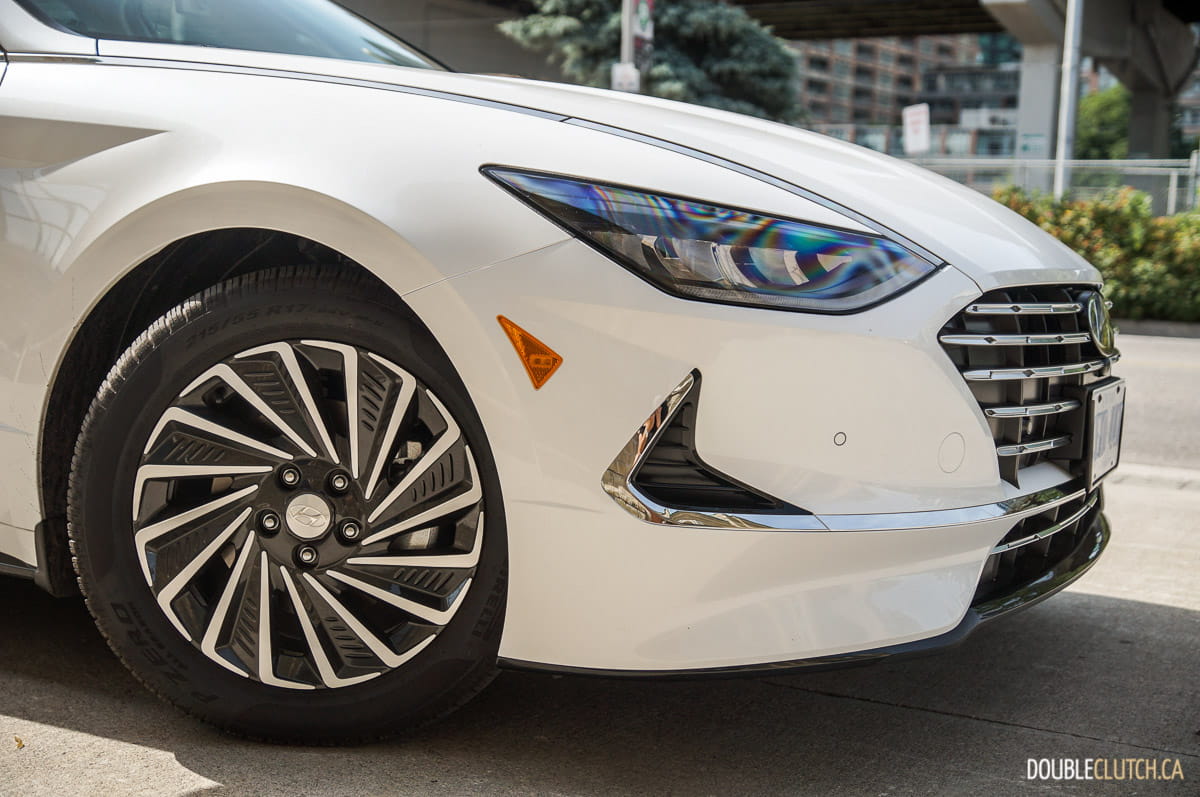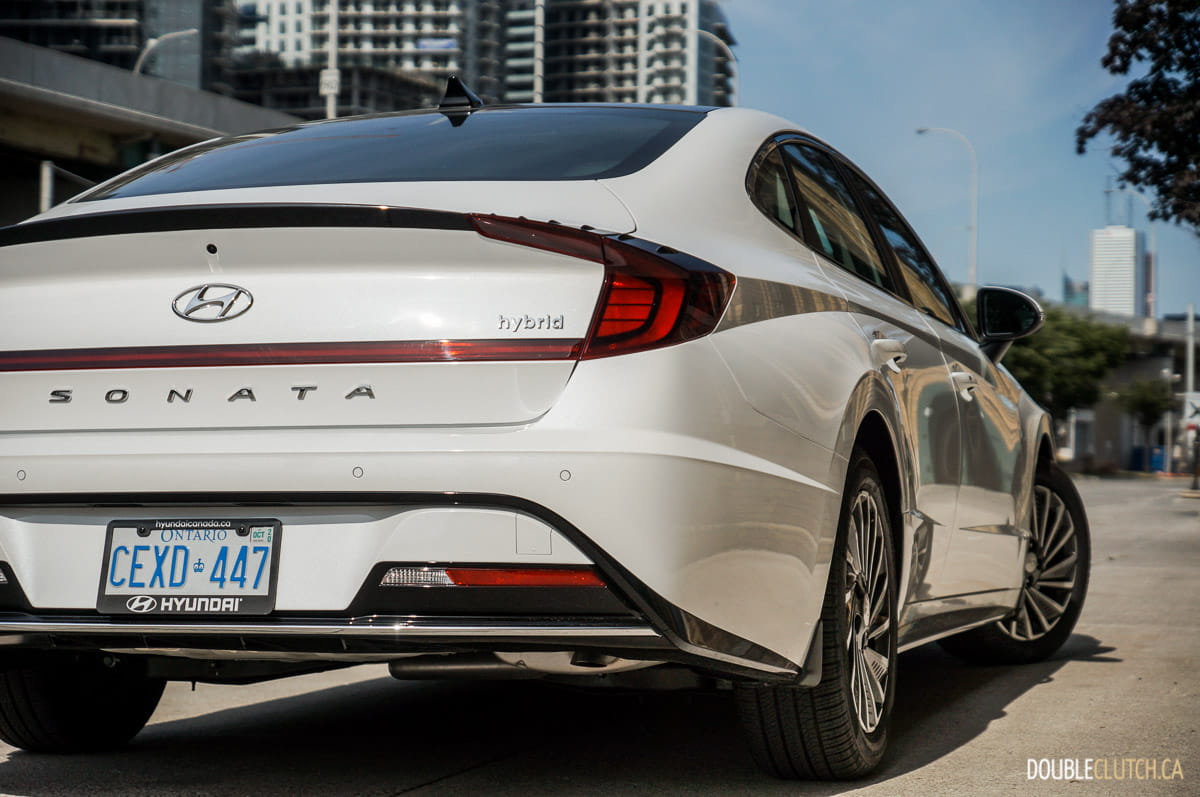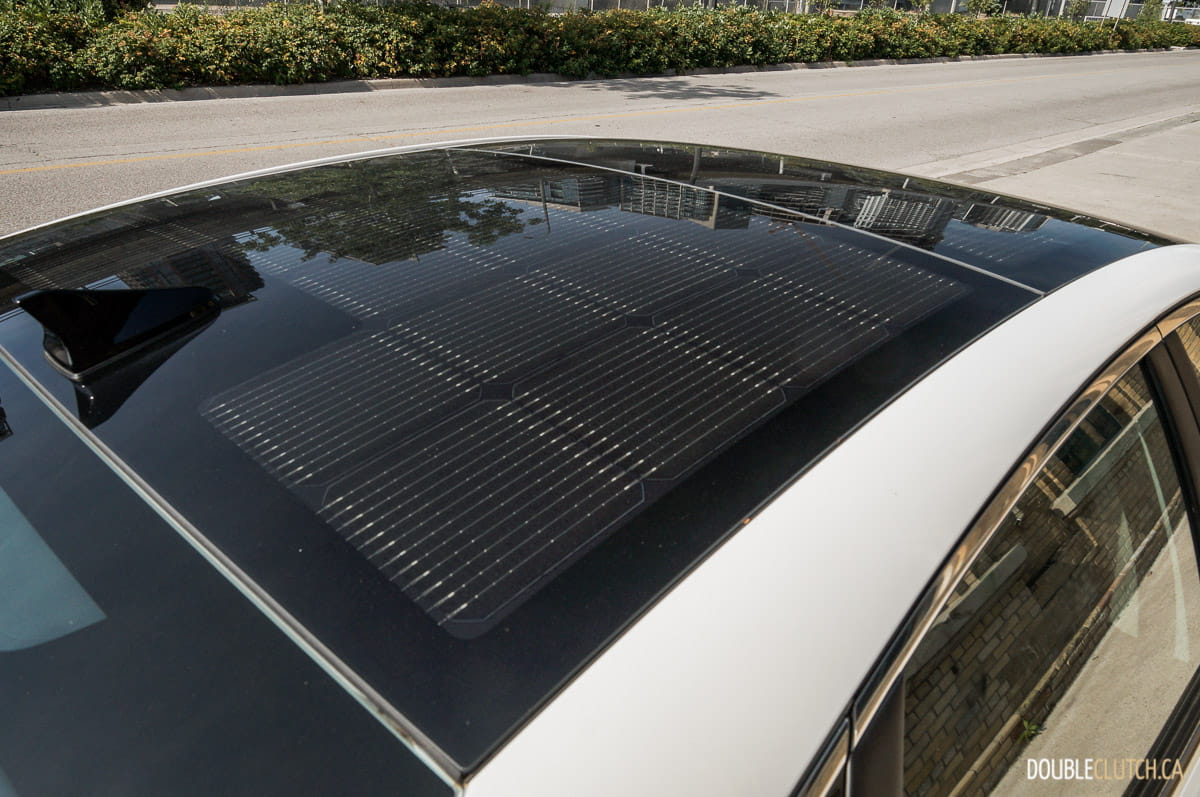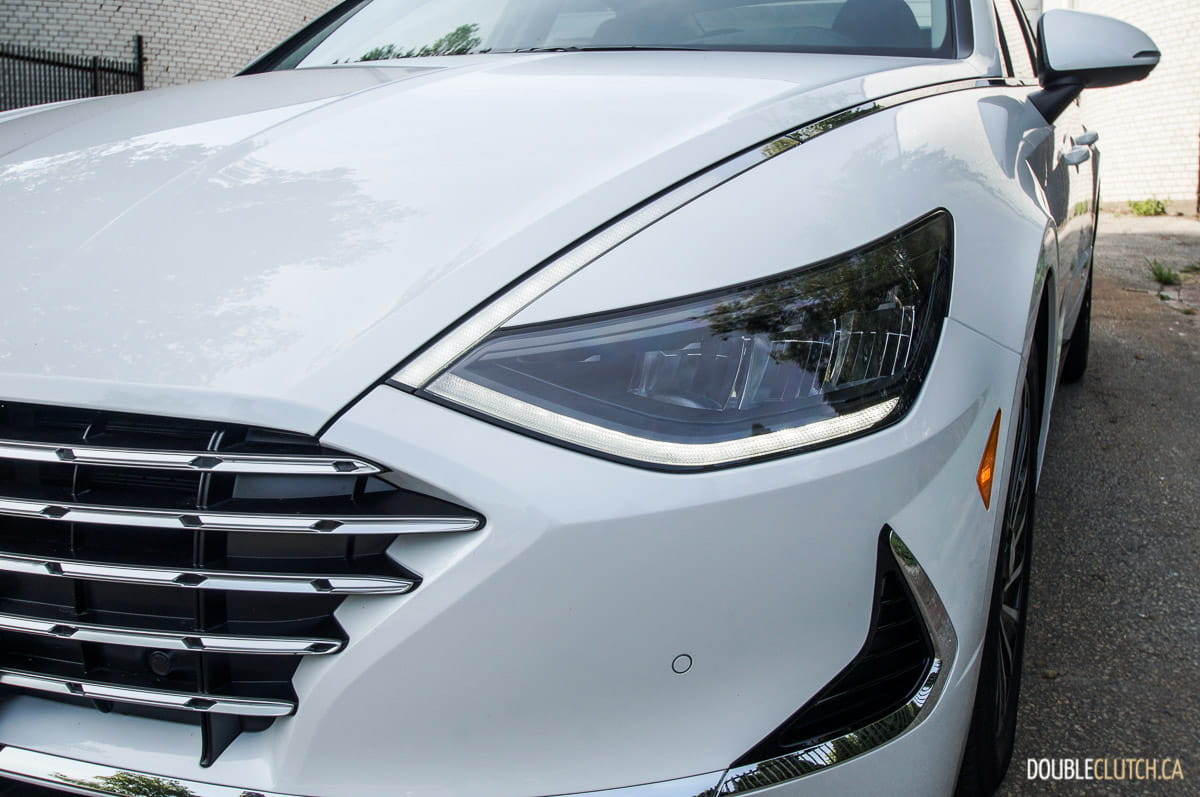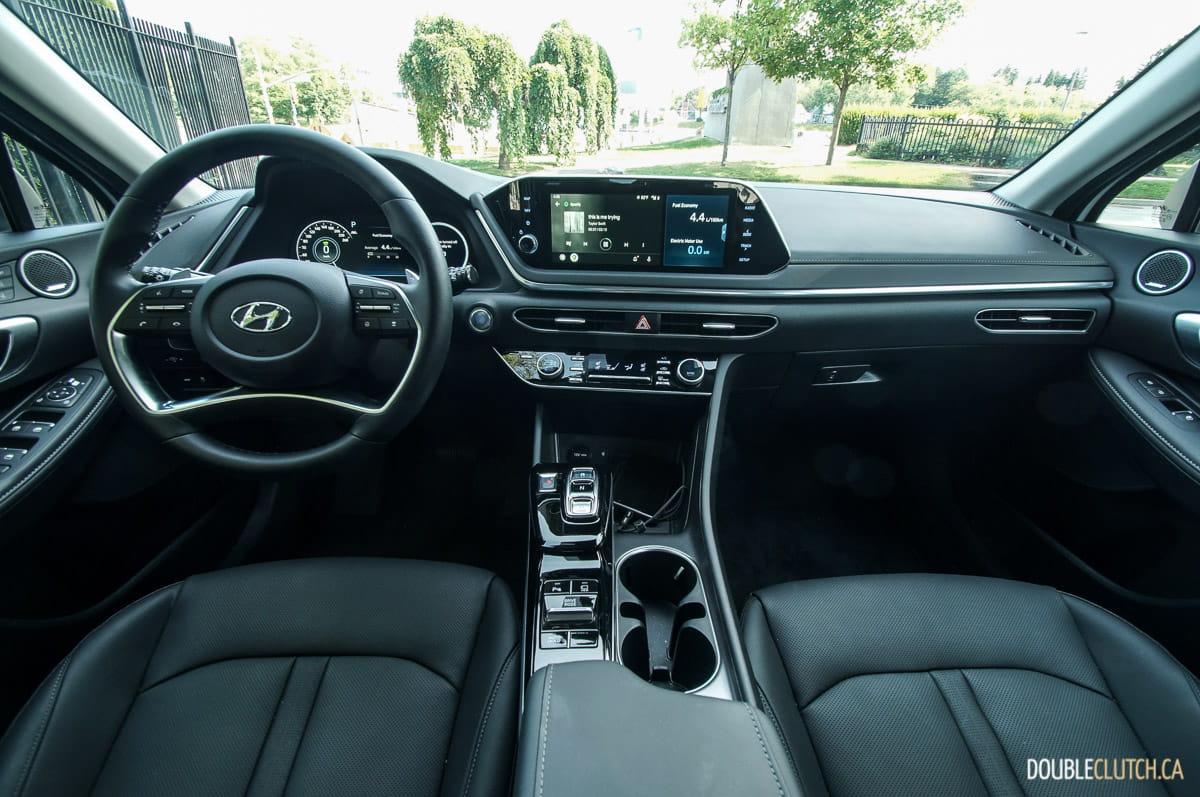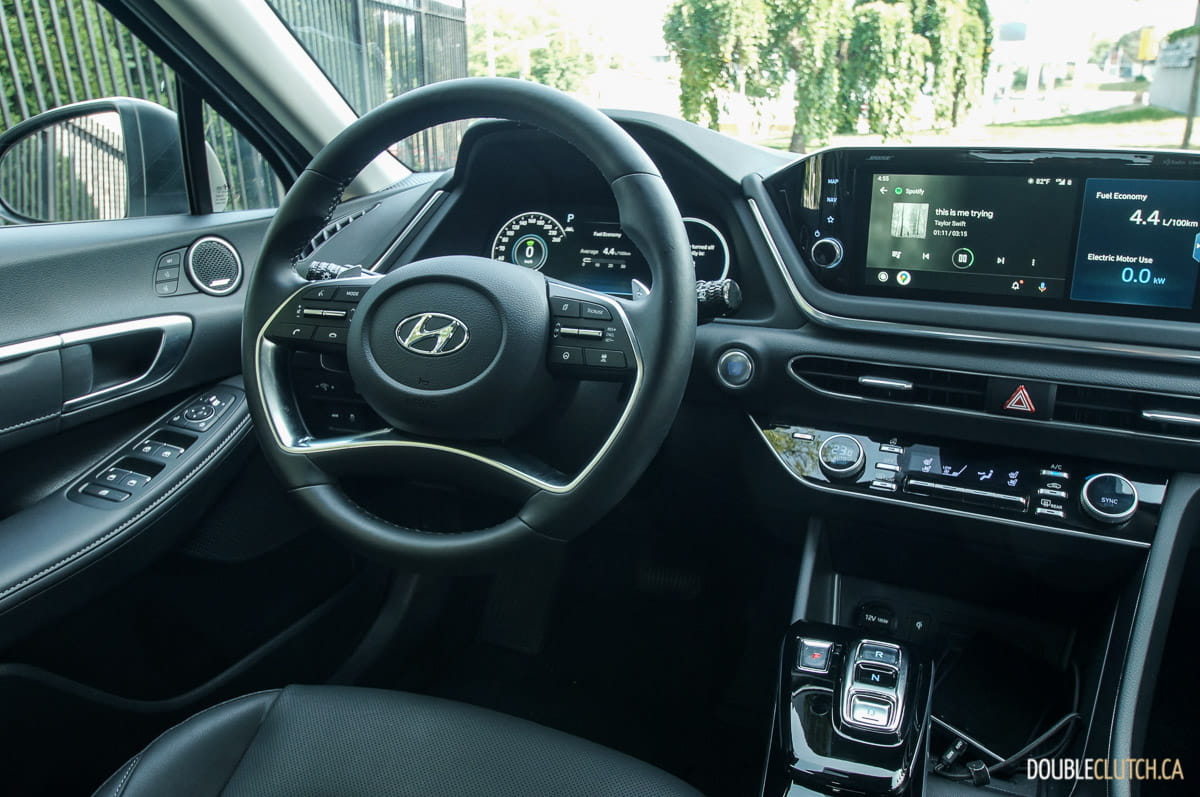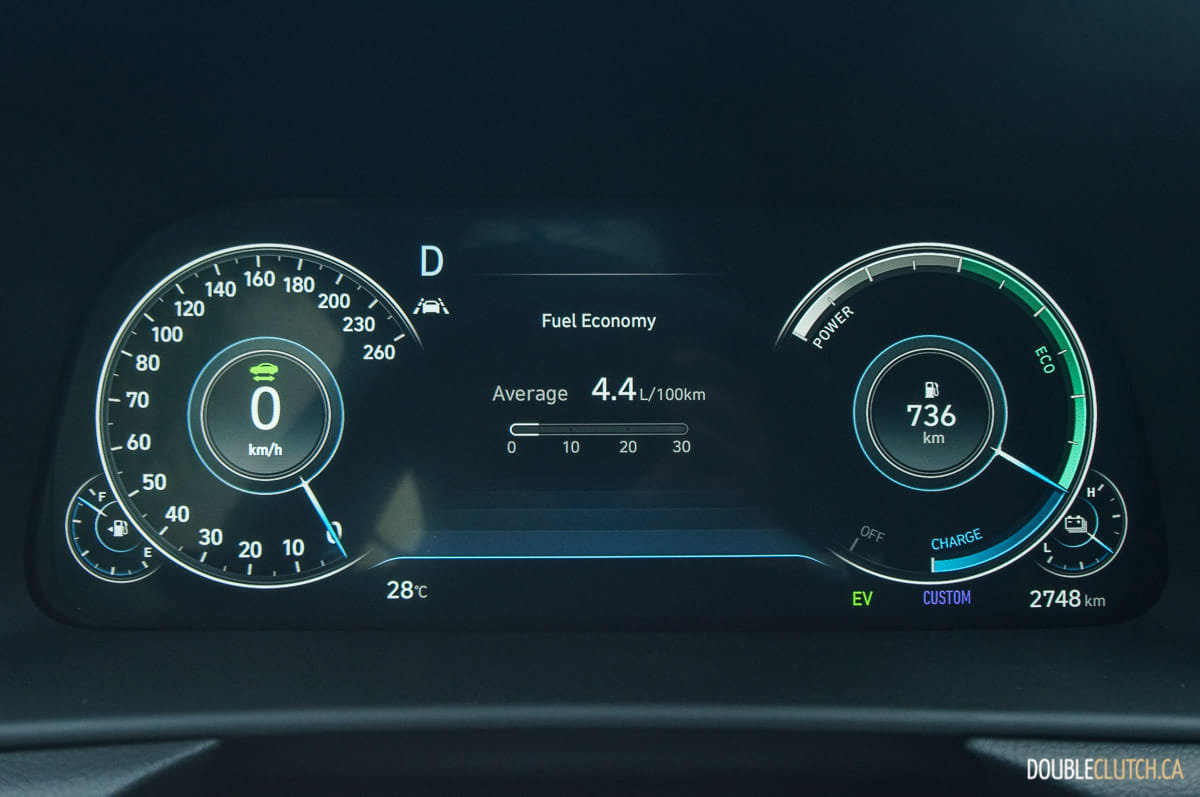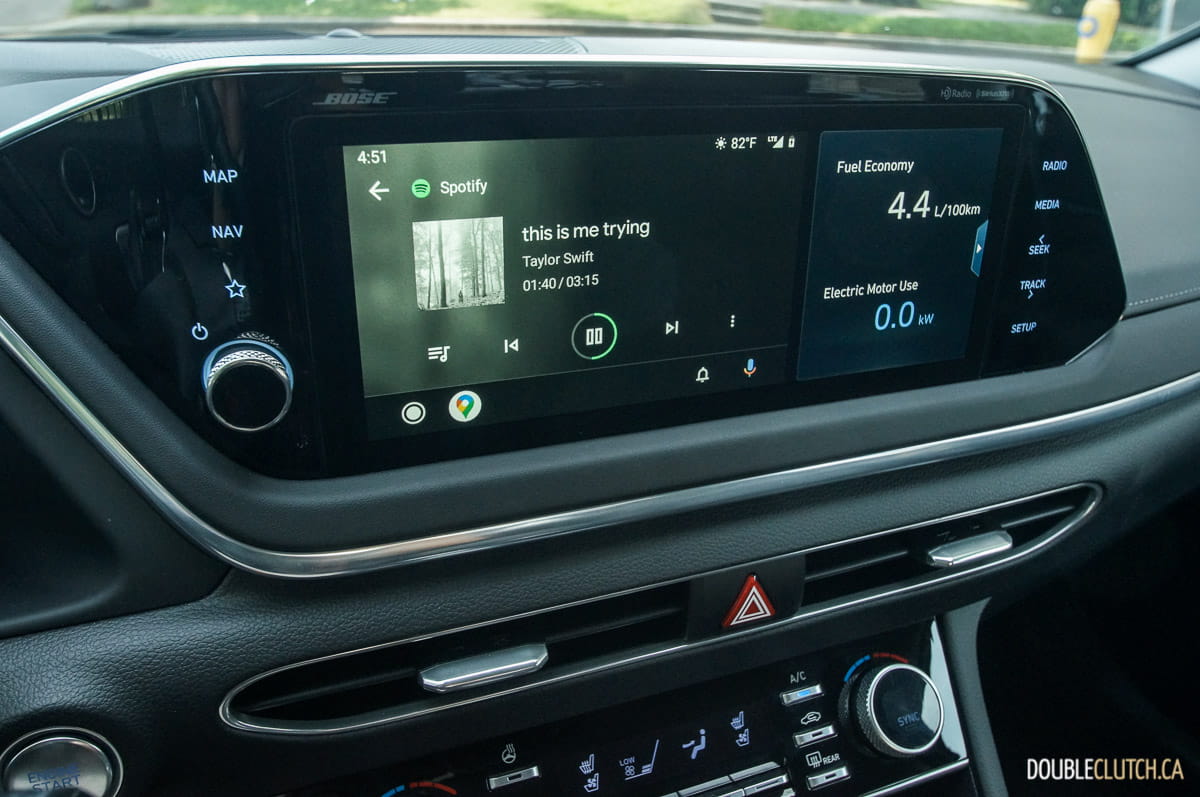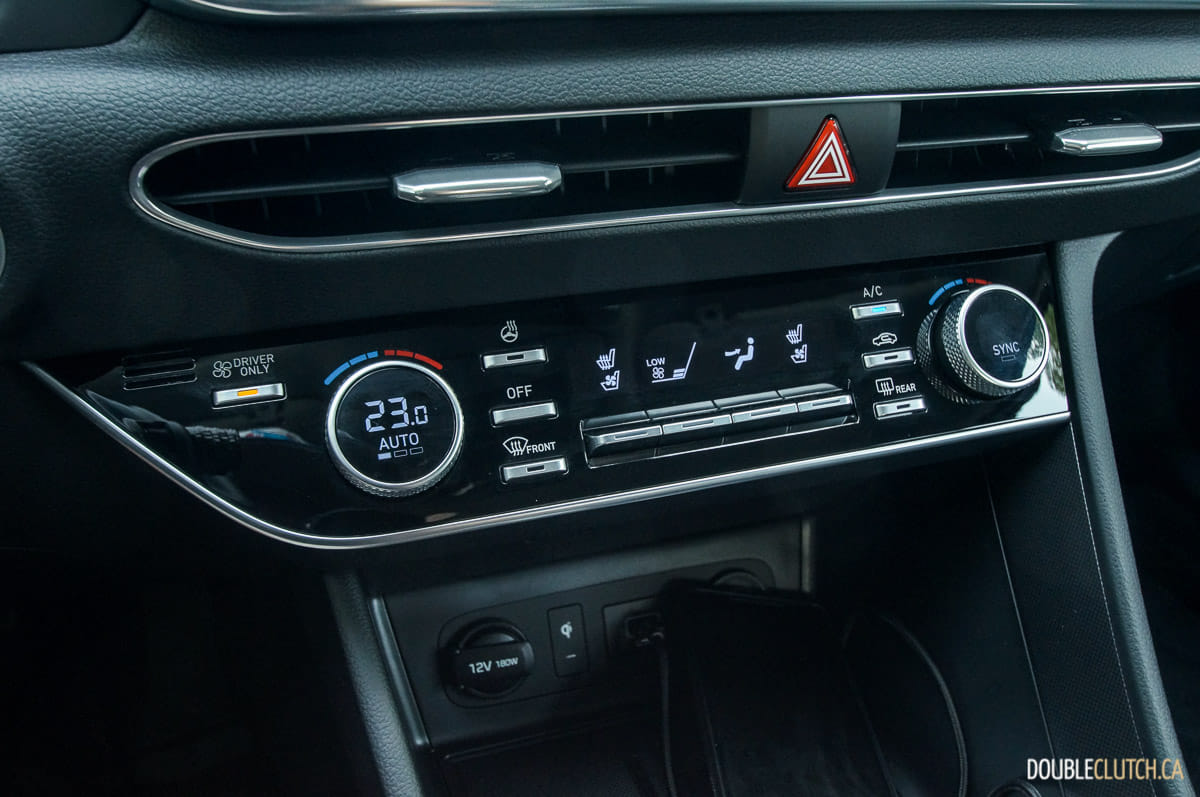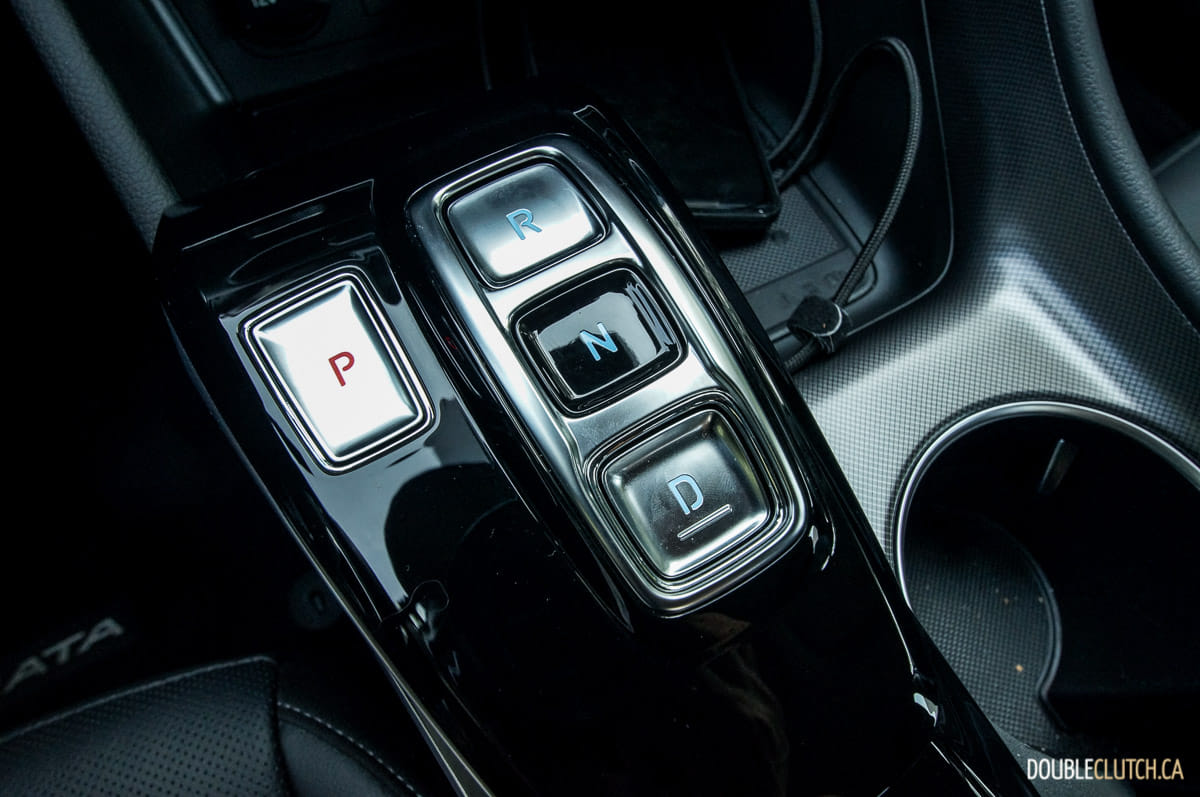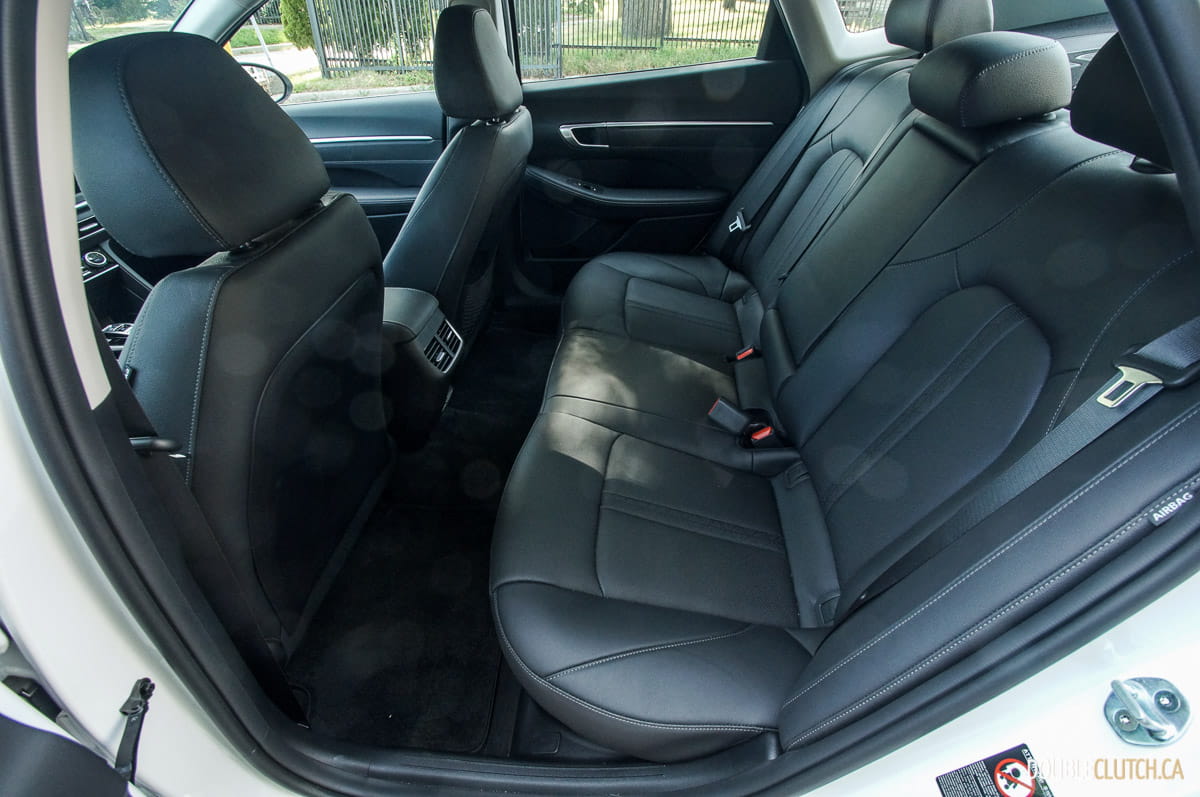With more and more of the motoring world moving towards electrification, each successive generation of products look to mop the floor with the previous one. This year heralds the introduction of an all-new midsize sedan from Korean automaker Hyundai, and the 2020 Hyundai Sonata Hybrid Ultimate is a new-from-the-ground-up contender looking to outdo its predecessor in a big way. Moving to a much bolder look, the new Sonata’s styling can be quite polarizing, especially in photos. DoubleClutch.ca Magazine will let you judge for yourself, but after piloting one around for a week, we’ve got at least a few things to say about the rest of it.
Only one trim level is available for the Sonata Hybrid – the fully decked out Ultimate. For $40,099, it’s pretty well decked out as any loaded midsize sedan should be. Standard equipment includes leather seats (ventilated up front and heated front and rear), power adjustable front seats with driver’s memory, a heated steering wheel, pushbutton start, wireless phone charging, Apple CarPlay and Android Auto, a head-up display, a 12.3-inch LCD gauge cluster, a 10.25-inch infotainment touch screen, rain-sensing windshield wipers, and LED headlights.
As a hybrid, a gasoline engine and an electric motor join forces to get the Sonata going. The fossil fuel half of things is a 2.0-litre inline four cylinder making 150 horsepower at 6,000RPM and 139 lb-ft. at 5,000RPM. On the other side of the coin, the electric motor puts out 51 horsepower and gets its juice from a 1.62 kilowatt-hour (kWh) lithium-ion polymer battery. While these two power output figures can’t exactly be stacked, Hyundai rates the total system output at 192 horsepower and 271 lb-ft. of torque. Both systems pass through a six-speed automatic transmission on their way to the front wheels; no all-wheel drive is available.
Unlike other hybrids, which use a continuously variable transmission (CVT), the Sonata’s six-speed slushbox is a little less refined at low speeds, and drivers will be able to feel the transmission shift between gears even when in electric-only mode. Fortunately, passing the electric motor through the gearbox maintains good versatility – that is, the electric motor can take advantage of gearing and operate in a wide range of conditions up to 120 kilometres per hour. Plugging in is not required (leave that to the Sonata plug-in hybrid), and the battery is charged mainly through the brake pedal – light to medium braking runs the motors in reverse, turning them into generators that charge the battery.
To further improve the efficiency game, the Hyundai sedan’s main party trick lies in an additional set of solar cells on the roof. While this comes at the expense of having a sunroof, the panels can charge at a maximum of 205 watts. It can charge both the 12-volt and hybrid powertrain batteries, and depending on latitude – which determines how much daily sunlight certain parts of the world can get – just over three kilometres of range can be added per day. 12-volt accessories such as the infotainment, heating/air conditioning, and lighting can be a fairly large draw on the electrical system, and so the solar panels are as functional as much as they improve form.
Natural Resources Canada’s nominal fuel economy ratings come in at 5.3L/100KM in the city, and 4.6L/100KM on the highway. With the Sonata parked outside for the entire duration of its week on test, observed consumption beat both figures, returning 4.4L/100KM in mixed driving. This included air conditioner use in summertime weather, and only very mile hypermiling techniques were employed. Regular fuel is acceptable, and while tank capacity is a smallish 50 litres, the observed and nominal consumption numbers will bring about a driving range in the neighbourhood of 1,000 kilometres.
If drivers pay a little bit of attention as to whether the gasoline engine was running, they can ease up on the throttle for a second or two to encourage the Sonata to shut off the internal combustion engine and enter into electric-only mode. This is especially easy to do on flat ground, and can improve fuel consumption considerably. Compared to the conventional gas-only Sonata, nominal economy is improved by about 35 percent, and straight-line acceleration performance is still more than adequate.
With a new chassis for this year, the 2020 Hyundai Sonata does well in the handling department. While the electric power steering is pretty overboosted, it’s surprisingly precise and is paired with sharp turn-in response. Sweeping highway off-ramps can be tackled with a good amount of gusto, and the Sonata Hybrid eschews more conservative low rolling resistance rubber in favour of more performance-oriented P215/55R17 Pirelli PZero All Season. While a lot of hybrids sacrifice road-holding in the name of economy, Hyundai has shown that one can still have the best of both worlds.
From the driver’s seat, the cabin is a smooth and quiet place to be, and the relatively sporty tuning doesn’t ruin the ride quality at all. Interior design, materials, and fit and finish are more than up to par, and are easily competitive against the Japanese. Seating for five will be about as comfortable as any mainstream midsize sedan, and cargo capacity is completely unimpeded by the hybrid battery system. The trunk capacity of 453 litres (16.0 cubic feet) remains the same, and rear seats still fold for larger cargo. This wouldn’t have been the case in the automotive industry just a few short years ago!
As for the electronics and gadgets, the large 12.3-inch gauge cluster and 10.25-inch infotainment screens are easy to read in all sorts of lighting, and the head-up display is customizable to provide as much or as little information as desired. For many years, Hyundai has put together an intuitive and clean menu and touch screen user interface, and despite a few tweaks to improve visual polish, it remains as easy as ever. Apple CarPlay and Android Auto don’t take up the entirety of the wide screen, and other driving, navigation, or vehicle information can be displayed alongside the connected smartphone.
Considered as an entire package, the 2020 Hyundai Sonata Hybrid Ultimate is the real deal in terms of hybrid midsize sedans. By comparison, it stickers for about $1,300 cheaper than a Toyota Camry Hybrid XLE and Honda Accord Hybrid Touring. The Sonata is every bit as competitive in terms of its hybrid system, fuel economy, build quality, and most of all, its reluctance to blandness. While the Camry has its own unique design style, the Sonata looks much more handsome in person than when on a screen, and hits all the right buttons everywhere else. It would behoove buyers to keep it on their midsize sedan shopping lists.







